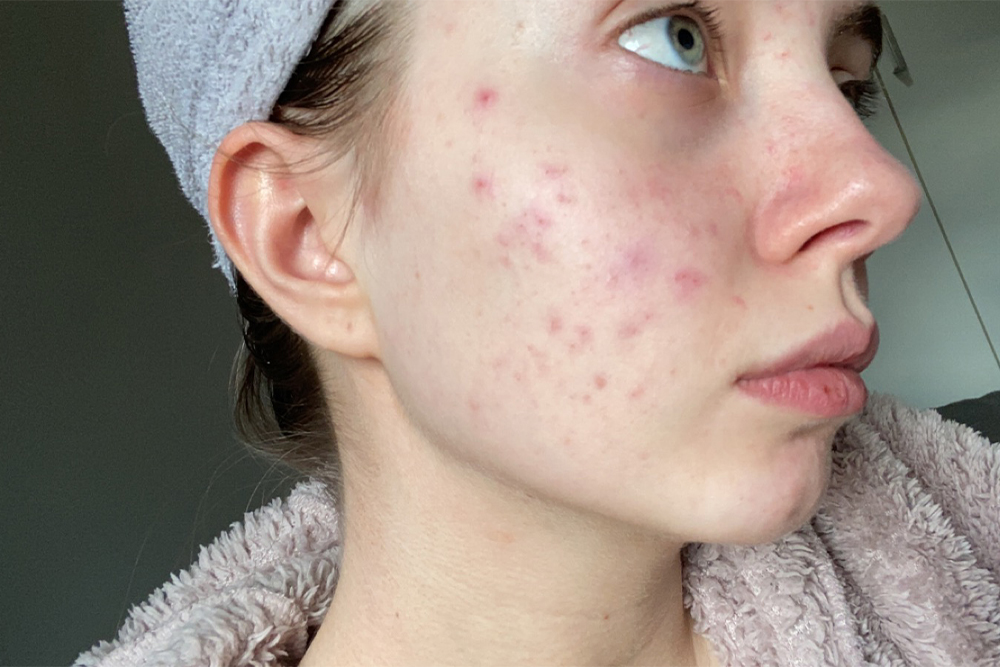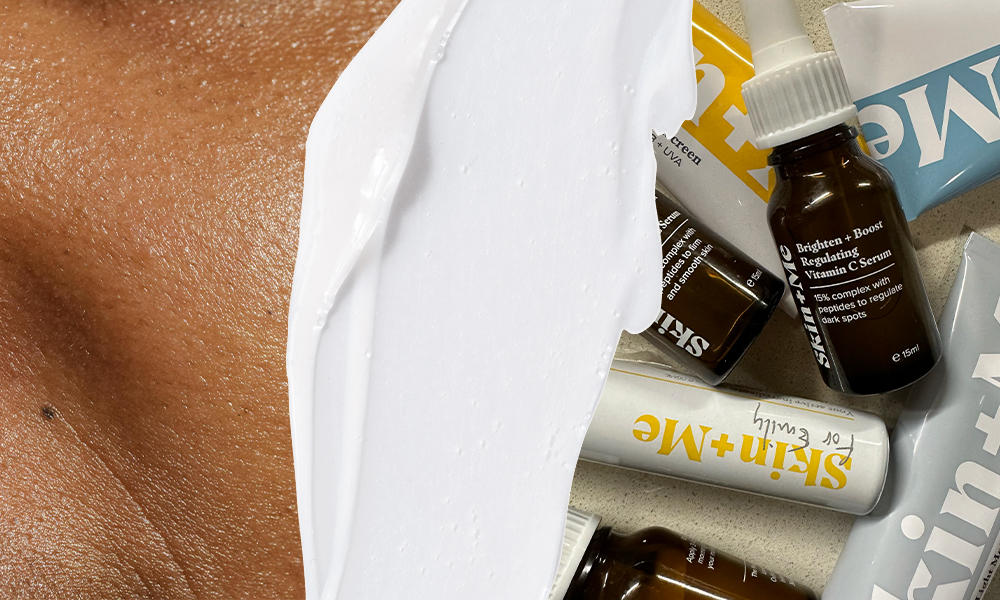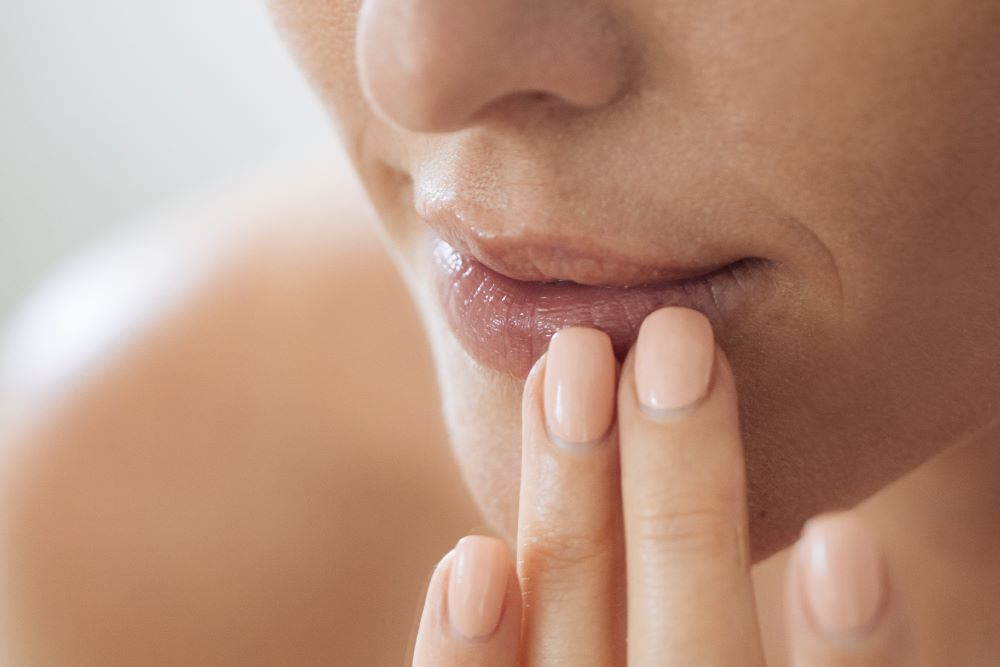Ask A Clinician: Can I Use Actives With A Chronic Skin Condition?

Ask A Clinician: What Is The Gut-Skin Axis?
Authors: Nafeesa Ullah, Head of Prescribing + Despoina Stylidou, Pharmacist Clinician at Skin + Me
We all know the phrase “trust your gut” – but did you know just how important your gut is?
Recent studies have shown a fascinating link between gut health and skin health, known as the gut-skin axis or GSA. This connection suggests that your gut could significantly impact your skin’s appearance – read on to learn more about the importance of your microbiome, and what it means for our skincare routines.
Is there a link between your skin and your gut?
The gut-skin-axis describes the relationship where the gut can influence the health of your skin. Although this connection is complicated, multiple studies support a connection between the two.
The gut consists of trillions of bacteria that play a crucial role in digestion, immune system function, and overall health. Disruptions in this microbiome, known as dysbiosis, can lead to inflammation and immune responses. Research has shown that these responses may contribute to skin issues like acne including acne, rosacea, eczema and psoriasis.
It is important to look out for key symptoms that might indicate an underlying issue. Chronic digestive problems (e.g. bloating, constipation or diarrhoea), coupled with persistent skin concerns such as acne, breakouts, redness, dryness might suggest a gut-skin axis imbalance.
Does improving your gut health improve your skin?
Understanding the importance of the microbiome is crucial for maintaining a healthy immune system. Dysbiosis can disrupt the communication between the microbiome and the individual, potentially causing an imbalance in the immune system. Recent advances in understanding the relationship between the skin and gut microbiome have led to new ways to target the gut-skin axis, from medical treatments to lifestyle changes.
A diet high in industrial trans fats is linked to an increase in harmful gut microbes and a reduction in the helpful ones. Oils like soybean, sunflower, and canola are known to cause gut inflammation, which can manifest on the skin and delay wound healing. High-fat diets have also been shown to reduce diversity of the gut microbiome and increase the production of harmful substances, leading to inflammation that negatively impacts skin health.
On the other hand, a diet rich in collagen peptides can protect the skin. Consuming whey and pea protein extracts increases good gut bacteria like Lactobacillus and Bifidobacterium, while reducing harmful bacteria such as Bacteroides fragilis and Clostridium perfringens.
Consuming fibre, particularly from whole grains, also increases the population of good bacteria in the gut. These bacteria convert complex carbohydrates into short-chain fatty acids, which improve the skin microbiome and enhance immune defences. They also prevent harmful bacteria growth and reduce inflammation, for healthier skin overall.
What is the skin microbiome?
Not only do we have bacteria in our gut, but we also have plenty of our bacteria living on our skin. The skin is a 1.8 m2 ecosystem that supports a wide range of microorganisms, which are needed for our skin to be healthy.
These microorganisms have adapted to use the nutrients available on our skin. The microbiome plays an important role in educating our immune system, as well as protecting against harmful organisms.
Dry skin has shown to have a less diverse core microbiome than well-hydrated skin. Simple, supportive skincare products can help maintain hydration levels – look out for moisturisers with ceramides and hyaluronic acid. Opt for gentle cleansers, which will reduce irritation and purify the skin while minimising disruption to your skin’s microbiome.
What is probiotic skincare?
The use of biotherapy – a type of medical treatment that uses substances from living organisms – on the skin dates back to 1912. In recent years it’s seeing an emergence in the mainstream skincare market as probiotic skincare. It is thought that probiotic skincare helps maintain the balance of microbes and reduces the symptoms of skin conditions and concerns.
At the moment there are limited studies exploring the efficacy of applying probiotics to the skin. Some existing research has shown that probiotics may help reduce inflammation and speed up the recovery of skin barrier, but there are very limited studies looking into the impact of probiotics in skin ageing.
To fully understand these areas, we still need additional research to understand the connections between the human skin, the gut and probiotics. However we do know that, cultivating a healthy gut microbiome through lifestyle choices is likely to have a positive effect on the health of our skin and our overall well-being.
References:
https://www.ncbi.nlm.nih.gov/pmc/articles/PMC5418745
https://pubmed.ncbi.nlm.nih.gov/25563215
https://www.ncbi.nlm.nih.gov/pmc/articles/PMC8073324
https://www.ncbi.nlm.nih.gov/pmc/articles/PMC3038963
https://www.ncbi.nlm.nih.gov/pmc/articles/PMC7847434
https://pubmed.ncbi.nlm.nih.gov/24268438
https://pubmed.ncbi.nlm.nih.gov/21407241
https://www.nature.com/articles/nrmicro.2017.157
https://www.ncbi.nlm.nih.gov/pmc/articles/PMC5418745
https://jamanetwork.com/journals/jamadermatology/article-abstract/505747
https://pubmed.ncbi.nlm.nih.gov/27735094
https://www.mdpi.com/2227-9059/10/5/1037
https://www.sciencedirect.com/science/article/abs/pii/S0738081X21001930
https://www.tandfonline.com/doi/full/10.1080/19490976.2022.2096995
https://link.springer.com/article/10.1186/1757-4749-3-1
https://onlinelibrary.wiley.com/doi/full/10.1111/j.1600-0625.2009.01060.x
https://www.ncbi.nlm.nih.gov/pmc/articles/PMC3535073
https://www.ncbi.nlm.nih.gov/pmc/articles/PMC3535073
https://www.nature.com/articles/nrmicro.2017.157
https://www.ncbi.nlm.nih.gov/pmc/articles/PMC10110978
https://www.ncbi.nlm.nih.gov/pmc/articles/PMC5911989
https://bmcbiol.biomedcentral.com/articles/10.1186/s12915-019-0660-6
https://www.ncbi.nlm.nih.gov/pmc/articles/PMC3088928
https://www.jacionline.org/article/S0091-6749(23)01718-9/fulltext
https://www.ncbi.nlm.nih.gov/pmc/articles/PMC8955881
https://www.ncbi.nlm.nih.gov/pmc/articles/PMC3038963/figure/F1



